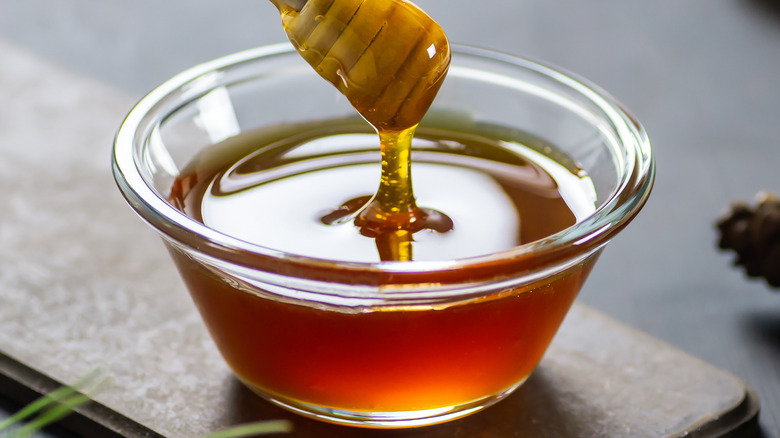What Makes This Rare Italian Honey So Unique
Honey is a surprisingly versatile ingredient. It can be used in marinades and salad dressings to subtly flavor dishes like ice cream or to sweeten baked goods and a morning cup of coffee naturally. But the substance's flexibility extends beyond its versatile uses. According to the National Honey Board, the United States produces more than 300 different styles of honey based on the flowering plants they come from.
There are more common varieties, like clover and orange blossom, though there can be differences between plant variations. More specific types of honey, such as blueberry, sage, and eucalyptus honey, are based on their region or state. What you might not realize is that not all honey is sweet. And the stereotype that darker honey boasts a bolder flavor is definitely true of the rare honey made primarily on the Italian island of Sardinia (via BBC Travel). While the plant that produces the unusual corbezzolo honey is found in many other European regions, few make as much honey as Sardinia.
This is what corbezzolo honey tastes like
According to BBC Travel, bees make corbezzolo honey when they pollinate "white, bell-shaped flowers" that appear on the island's wild strawberry trees between October and December. But what makes this ancient honey so extraordinary is its incredibly distinct bitter taste and the fact that it is loaded with all kinds of nutrients. For years, the unique Italian honey has been used for medical purposes ranging from sleep aids to anti-diarrheal. Corbezzolo honey also has anti-inflammatory properties and has even been studied for its ability to reduce the risk of developing colon cancer.
If you are primarily interested in its unusual flavor, you'll be more than pleased. BBC Travel explains that the honey has notes of leather, balsamic vinegar, licorice, pine tree sap, coffee, and finishes with a smokiness. Corbezzolo honey is a very dark amber color and lightens as it crystallizes (via BBC Travel). Its bitterness is thought to be the result of glycoside arbutin, which fuses to plant sugars on the molecular level. Still, the honey's taste doesn't restrict its usage to savory recipes. In fact, local Sardinians use it in their coffee for a more complex flavor.

